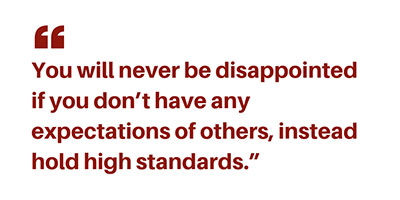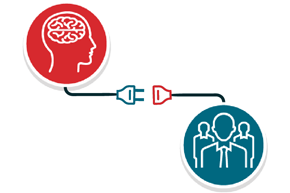I remember being a marketing associate at Merck—it was my first corporate position outside of the sales organization. My job was to develop and shepherd marketing communications for our osteoporosis business unit. I began learning about the internal processes, such as the specialist stakeholders (Legal, Medical, Regulatory, and Compliance) must review and approve all communications. With little fear that I could get done what was needed, I didn’t always have success. In fact, I often failed. So in this article, I will share 5 key techniques that I’ve learned over time for effective cross-functional collaboration between these specialist stakeholders.
Working cross-functionally to get specialist stakeholder feedback became intimidating to me because I didn’t succeed at first. I had to figure this out as a young product marketer. I got a break with our lead review attorney at Merck. He was intelligent, articulate, and mature; then about the age that I am now. I didn’t get any coaching from my management or peers on how to work with him, but plenty of chuckles and hazing about how difficult it would be to get approvals from him. I was confident and unfazed. I figured the wheels of the cogs had to move forward for patient care. How little did I know at that early point of my career!
 I thought about her advice and took advantage of an opportunity to speak with him on a Friday afternoon to learn how I could elevate our cross-functional working relationship. In other words, what could I do to meet my deadlines? His advice changed my approach from that day forward. With other learnings after working with other great industry folks in the Compliance, Legal, and Regulatory domains, I’ve put together my most valuable insights to work with these groups cross-functionally.
I thought about her advice and took advantage of an opportunity to speak with him on a Friday afternoon to learn how I could elevate our cross-functional working relationship. In other words, what could I do to meet my deadlines? His advice changed my approach from that day forward. With other learnings after working with other great industry folks in the Compliance, Legal, and Regulatory domains, I’ve put together my most valuable insights to work with these groups cross-functionally.1. Focus on individuals and not deadlines. Often, much of the planning and execution of an integrated marketing campaign is done in silos—including ideas. Yet in talking with key stakeholders throughout the years, I learned that they provide excellent input. When I listened to their insights and reported these back to the team, we usually appreciated the feedback and took their advice. That small change gave these stakeholders the respect they deserved, formed partnerships, created loyalty, and in effect, broke down the silos.
2. Instill positivity. Positivity is a much needed quality in the doll drums of day-to-day work. It creates positive inertia. If positivity isn’t in your DNA, then build on it because it is something we can all afford to further develop.

3. Have empathy and make meetings count. How many hours of meetings do you participate in each day? Most marketers report 6 or more hours, on average. Yet, according to a survey on salary.com, 49% of workers consider unfocused meetings to be their biggest workplace time-wasters. And when that happens, people become unfocused and appear to be disengaged. That leads to a feeling of disrespect. So, when you have meetings with your specialist stakeholders, create an agenda and make it count. Nobody wants their time wasted. ![]()
4. Simplify communication. Today there is so much communication circulating around us. From Skype IM, emails, text messages, phone calls, and internal portals, it can feel overwhelming. It puts a mental strain on today’s collaborators. Aim to avoid this strain and make your communication efforts more collaborative by centralizing and consolidating information chronologically so that team members can refer back as needed. Capture the content and report it elegantly so that you can conduct an After Action Review in order to discuss how the project could’ve been done better.
5. Report abundantly. Sharing project information between team members is critical, and including your internal specialists with these reports is no different. So often we get what we need and disappear. Reporting back to specialist stakeholders, even with a simple email update to inform them on project status, makes the entire group feel engaged and part of the team.
Collaboration requires more than just talking, it requires real changes to processes and tools. If you provide the right structure to support effective collaboration, you will find yourself enjoying the benefits of fewer conflicts, richer programs, more cross-functional team buy-ins, and yes, more likely to meet those deadlines.





